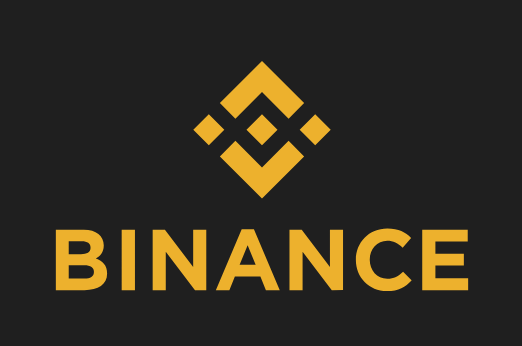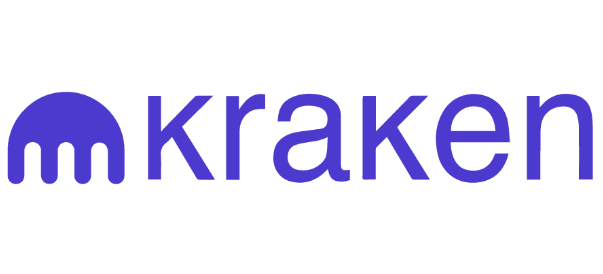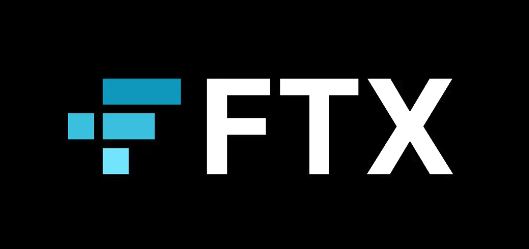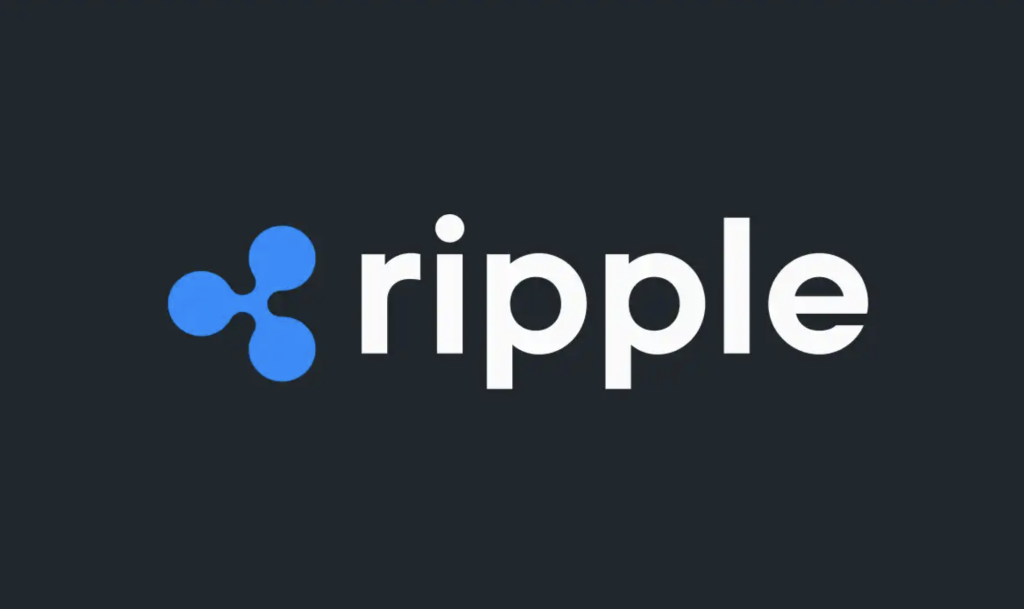
How Do Cryptocurrency Exchanges Make Money?
Cryptocurrencies have taken the financial world by storm, revolutionizing the way we perceive and transact value. As the popularity of digital assets continues to soar, cryptocurrency exchanges have emerged as the key players facilitating the buying, selling, and trading of these virtual currencies. But have you ever wondered how these exchanges make money?
In this comprehensive blog post, we will delve into the intricate mechanisms that drive the revenue models of cryptocurrency exchanges. By exploring various aspects such as trading fees, listing fees, margin trading, and additional revenue streams, we will uncover the strategies employed by exchanges to generate income and sustain their operations.
I. Trading Fees
One of the primary ways cryptocurrency exchanges make money is through trading fees. When users execute trades on these platforms, they are charged a fee for the services rendered. These fees can vary depending on factors such as the exchange’s fee structure, the trading volume, and the type of trade (maker or taker). Some exchanges employ flat fees, while others utilize percentage-based fees.
For instance, popular exchanges like Binance, Coinbase, and Kraken implement different fee structures to attract users and remain competitive in the market. We will examine the nuances of these fee structures, compare the fees charged by various exchanges, and explore any discounts or rewards programs they offer to incentivize trading activity.
II. Listing Fees
In addition to trading fees, cryptocurrency exchanges also generate revenue through listing fees. When a new cryptocurrency seeks to be listed on an exchange, it often needs to pay a listing fee. These fees can range from a few thousand dollars to millions, depending on the exchange’s reputation and market reach.
We will delve into the reasons why cryptocurrencies are willing to pay listing fees and the benefits they gain from being listed on reputable exchanges. Additionally, we will explore the controversy surrounding listing fees, potential risks for investors, and the impact of high listing fees on market dynamics.
III. Margin Trading and Leverage
Margin trading and leverage are advanced trading features offered by many cryptocurrency exchanges. Through margin trading, traders can borrow funds from the exchange to amplify their trading positions, potentially increasing their profits. Exchanges charge interest on these borrowed funds, enabling them to generate revenue.
In this section, we will define and explain margin trading and leverage, explore how exchanges profit from these services, and highlight the risks associated with them for traders. We will also examine case studies of exchanges that offer margin trading and their revenue generation strategies. Furthermore, we will delve into the regulatory landscape surrounding margin trading in different countries.
IV. Additional Revenue Streams
Cryptocurrency exchanges have expanded their revenue streams beyond trading and listing fees. They have diversified their offerings to include cryptocurrency lending and borrowing services, OTC (Over-the-Counter) trading, cryptocurrency derivatives trading, and token sales through initial exchange offerings (IEOs).
We will explore these additional revenue streams in detail, discussing how exchanges leverage them to generate income. Furthermore, we will examine the role of partnerships and collaborations with blockchain projects and other businesses in enhancing the revenue-generating capabilities of exchanges.
V. Conclusion
In conclusion, understanding how cryptocurrency exchanges make money is crucial for investors and traders operating in the cryptocurrency market. By delving into the intricacies of trading fees, listing fees, margin trading, and additional revenue streams, we have gained insights into the various strategies employed by exchanges to sustain their operations.
As the cryptocurrency ecosystem continues to evolve, exchanges face new challenges and opportunities in their quest for profitability. By staying informed about these revenue models, investors and traders can make more informed decisions and navigate the dynamic cryptocurrency landscape with confidence.
In the upcoming sections, we will dive deeper into each of these revenue streams, providing a comprehensive understanding of how cryptocurrency exchanges generate income and shape the future of the digital asset industry. Stay tuned!
Effective Communication and Order Management
In the fast-paced world of cryptocurrency trading, effective communication and order management are essential for the smooth operation of exchanges. Cryptocurrency exchanges need to provide reliable and real-time communication channels to ensure that users are well-informed about their trades, account activities, and any updates or announcements.
One aspect of effective communication is providing users with comprehensive order management tools. These tools allow traders to place, modify, and cancel their orders with ease. They provide vital information such as order status, trade history, and account balances, enabling users to make informed decisions.
Additionally, order management systems help exchanges maintain order books, matching buy and sell orders efficiently. By employing sophisticated algorithms, exchanges ensure that trades are executed promptly and at the best available prices. This not only enhances user experience but also contributes to the overall liquidity and stability of the exchange.
To achieve effective communication and order management, exchanges often invest in robust technology infrastructure, including high-performance servers, secure data centers, and advanced order matching engines. These systems are designed to handle massive trading volumes, ensuring that users can execute their trades seamlessly, even during peak market activity.
Moreover, exchanges may implement various order types, including market orders, limit orders, stop orders, and trailing stop orders. These order types provide traders with flexibility in executing their strategies. Market orders allow immediate execution at the current market price, while limit orders enable users to set a specific price at which they want to buy or sell. Stop orders help traders protect their positions by triggering a market order once a certain price level is reached, while trailing stop orders automatically adjust the stop price as the market moves in the trader’s favor.
In summary, effective communication and order management are vital components of a successful cryptocurrency exchange. By providing users with reliable communication channels and intuitive order management tools, exchanges can enhance user experience, improve market liquidity, and ensure the smooth execution of trades. The continuous development and improvement of these systems are paramount for exchanges to thrive in the competitive cryptocurrency market.
Trading Fees
Trading fees play a significant role in the revenue generation of cryptocurrency exchanges. When users engage in buying or selling cryptocurrencies on these platforms, they are charged a fee for the services provided by the exchange. These fees can vary based on the exchange’s fee structure, the trading volume, and the type of trade, such as maker or taker fees.
Maker and Taker Fees: Many exchanges differentiate between maker and taker fees. A maker is a user who adds liquidity to the order book by placing a limit order that is not immediately filled. On the other hand, a taker is a user who removes liquidity by placing an order that gets matched with an existing one. Typically, makers are charged lower fees or even offered rebates, while takers are subject to higher fees. This fee structure incentivizes users to contribute to the liquidity of the exchange.
Flat Fees vs. Percentage Fees: Exchanges may employ different fee structures. Some exchanges charge a flat fee for each trade, regardless of the trade size. This type of fee structure is often more favorable for larger traders as they pay a fixed cost per trade, regardless of the trade’s value. Other exchanges implement a percentage-based fee structure, where the fee is calculated as a percentage of the trade volume. Percentage-based fees can be more beneficial for smaller traders who engage in lower volume trades.
Factors Influencing Trading Fees: The specific trading fees can vary across exchanges and are influenced by several factors. These factors include the exchange’s operational costs, server maintenance, customer support, regulatory compliance, and market competitiveness. Exchanges need to strike a balance between generating revenue and attracting users with competitive fee structures.
Comparison of Trading Fees: It is important for traders to compare the trading fees across different exchanges to make informed decisions. Popular exchanges such as Binance, Coinbase, Kraken, and Bitstamp have varying fee structures. Some exchanges also offer fee discounts or rewards programs based on factors like trading volume, holding exchange-specific tokens, or loyalty programs. Traders should consider these factors when choosing an exchange to minimize trading costs.
Case Studies: To gain a deeper understanding of trading fees, we can examine case studies of specific exchanges. For example, Binance, one of the largest cryptocurrency exchanges, has gained popularity through its competitive fee structure and additional benefits for users who hold BNB tokens. Coinbase, a well-known exchange for beginners, offers a simple fee structure but charges higher fees compared to other exchanges. By analyzing these case studies, we can see how exchanges strategically structure their trading fees to attract users and generate revenue.
Trading fees are a vital source of income for cryptocurrency exchanges, enabling them to cover operational costs, invest in infrastructure, and provide essential services to their users. Traders should consider the fee structures, fee discounts, and rewards programs offered by different exchanges to optimize their trading strategies and minimize costs. In the next section, we will delve into another revenue stream for exchanges: listing fees.
Listing Fees
In addition to trading fees, cryptocurrency exchanges also generate revenue through listing fees. When a new cryptocurrency project wants to be listed on an exchange, it often needs to pay a listing fee. These fees can vary widely, ranging from a few thousand dollars to millions, depending on the reputation and reach of the exchange.
Reasons for Listing Fees: Cryptocurrencies pay listing fees to exchanges for several reasons. Firstly, being listed on a popular and reputable exchange enhances the visibility and credibility of the project. It provides exposure to a larger user base and increases the chances of attracting investors and traders. Secondly, exchanges have a responsibility to ensure that listed cryptocurrencies meet certain standards in terms of security, compliance, and market demand. The listing fee helps cover the costs associated with conducting due diligence and maintaining the integrity of the platform.
Factors Influencing Listing Fees: The amount of listing fees can vary depending on various factors. These factors include the exchange’s reputation, market reach, trading volume, regulatory compliance requirements, and the demand for listing on that particular exchange. Exchanges with higher trading volumes and more extensive user bases tend to charge higher listing fees due to the increased exposure and potential market impact they offer to listed projects.
Impact of Listing Fees: The practice of charging listing fees has sparked debates within the cryptocurrency community. Critics argue that high listing fees can create barriers for smaller projects with limited resources, hindering innovation and diversity in the cryptocurrency market. Additionally, there have been instances where projects with questionable legitimacy have paid substantial listing fees to gain credibility, leading to concerns about the integrity of the listing process and potential risks for investors.
Regulatory Considerations: Regulatory authorities are increasingly scrutinizing the listing process and the collection of listing fees by exchanges. Some jurisdictions have introduced guidelines or regulations to ensure fair and transparent listing practices. Exchanges are expected to conduct thorough due diligence on projects before listing them to protect investors from potential scams or fraudulent activities.
It is important for investors and traders to be aware of the potential risks associated with listing fees. While being listed on reputable exchanges can provide benefits in terms of liquidity and credibility, it does not guarantee the success or legitimacy of a cryptocurrency project. It is crucial to conduct thorough research, evaluate the project’s fundamentals, and consider factors beyond just the listing on an exchange.
In the next section, we will explore the world of margin trading and leverage and how these features contribute to the revenue generation of cryptocurrency exchanges.
Margin Trading and Leverage
Margin trading and leverage are advanced features offered by many cryptocurrency exchanges, allowing traders to amplify their potential profits (or losses) by borrowing funds to increase their trading positions. This feature has become increasingly popular among experienced traders seeking higher returns on their investments.
Definition and Explanation: Margin trading involves borrowing funds from the exchange to trade with larger positions than the trader’s own capital. By leveraging their initial investment, traders can potentially magnify their profits if the trade goes in their favor. However, it is essential to understand that leverage also amplifies losses, and traders can face significant risks if the market moves against their positions.
How Exchanges Profit from Margin Trading: Cryptocurrency exchanges generate revenue from margin trading through several mechanisms. Firstly, they charge interest on the funds borrowed by traders. This interest is typically calculated on a daily basis and is a percentage of the borrowed amount. The interest rate can vary depending on market conditions, the specific cryptocurrency being traded, and the exchange’s policies.
Secondly, exchanges often require traders to maintain a minimum margin or collateral to cover potential losses. If a trader’s position starts to incur losses and the margin falls below the required threshold, the exchange may issue a margin call, requiring the trader to either add additional funds or close the position. This ensures that the exchange is protected from potential defaults and helps maintain the stability of the platform.
Risks Associated with Margin Trading: While margin trading can provide opportunities for higher returns, it also carries significant risks. The leverage involved amplifies both profits and losses, and inexperienced traders can quickly find themselves in a precarious financial situation if the market moves against their positions. It is crucial for traders to have a thorough understanding of the risks involved, use risk management tools, and only trade with funds they can afford to lose.
Case Studies: Many cryptocurrency exchanges offer margin trading as one of their core services. For example, BitMEX is known for its highly leveraged Bitcoin futures contracts, enabling traders to access significant positions with relatively small amounts of capital. By analyzing case studies of exchanges that offer margin trading, we can gain insights into their revenue generation strategies and risk management practices.
Regulations and Oversight: Margin trading is subject to regulatory oversight in various jurisdictions. Some countries have imposed restrictions or requirements on the leverage offered by exchanges, aiming to protect traders from excessive risks. It is important for traders to be aware of the regulatory landscape and ensure they are using exchanges that comply with relevant regulations to safeguard their interests.
Margin trading and leverage are powerful tools that can magnify both profits and losses in cryptocurrency trading. While exchanges generate revenue from interest charges and margin requirements, traders need to exercise caution, conduct thorough research, and develop robust risk management strategies when engaging in margin trading. In the next section, we will explore additional revenue streams that contribute to the profitability of cryptocurrency exchanges.
Additional Revenue Streams
Cryptocurrency exchanges have expanded their revenue streams beyond trading fees, listing fees, and margin trading. They have diversified their offerings to include various additional revenue streams that contribute to their profitability and sustainability. Let’s explore some of these revenue streams in detail:
Cryptocurrency Lending and Borrowing: Many exchanges offer cryptocurrency lending and borrowing services to their users. Through these services, users can lend their idle cryptocurrencies to others in exchange for interest payments, while borrowers can access additional funds by offering collateral. Exchanges facilitate these transactions and charge fees for their services, acting as intermediaries between lenders and borrowers.
Over-the-Counter (OTC) Trading: OTC trading involves the direct buying and selling of cryptocurrencies outside of the traditional exchange order books. This service is beneficial for high-net-worth individuals, institutional investors, or traders looking to execute large trades without impacting the market price. Exchanges facilitate OTC trades and charge fees for their services, often offering personalized support and tailored solutions to meet the specific needs of their clients.
Cryptocurrency Derivatives Trading: Cryptocurrency derivatives, such as futures contracts and options, allow traders to speculate on the price movements of cryptocurrencies without owning the underlying assets. Exchanges offering derivative trading generate revenue from fees charged on these trades. By offering leveraged positions and advanced trading tools, exchanges attract experienced traders who seek to profit from the volatility of the cryptocurrency market.
Token Sales and Initial Exchange Offerings (IEOs): Some exchanges host token sales or participate in initial exchange offerings (IEOs) as a way to generate revenue. Token sales involve offering newly issued tokens to the public, while IEOs involve the exchange acting as a launchpad for projects seeking to raise funds. Exchanges charge listing fees for these token sales or IEOs, generating revenue from the projects looking to gain visibility and funding.
Partnerships and Collaborations: Cryptocurrency exchanges often form partnerships and collaborations with blockchain projects, other exchanges, or businesses in the crypto ecosystem. These collaborations can take various forms, such as joint marketing initiatives, cross-platform integration, or shared revenue models. By leveraging these partnerships, exchanges can expand their user base, increase trading volume, and generate additional revenue through shared profits or referral programs.
These additional revenue streams contribute to the overall profitability of cryptocurrency exchanges, enabling them to diversify their income sources and adapt to market trends. However, it is important to note that some of these services, such as lending, derivatives, and token sales, may involve higher risks and regulatory considerations. Users should carefully evaluate the risks and rewards associated with these services before participating.
In the next section, we will conclude our exploration of how cryptocurrency exchanges make money by summarizing the key insights and discussing the future outlook for these platforms in the ever-evolving crypto landscape.
Conclusion
In this comprehensive exploration of how cryptocurrency exchanges make money, we have dissected the various revenue streams that contribute to their profitability and sustainability. From trading fees and listing fees to margin trading, additional revenue streams like lending services, OTC trading, derivatives trading, token sales, and partnerships, exchanges have diversified their offerings to cater to the evolving needs of the cryptocurrency market.
Trading fees are a fundamental source of revenue for exchanges, charging users for the services provided. These fees can vary based on factors such as the exchange’s fee structure, trading volume, and the type of trade. By implementing fee structures that incentivize liquidity and competitiveness, exchanges attract traders while generating income.
Listing fees provide exchanges with revenue while offering projects visibility and credibility. However, the practice of charging listing fees has raised concerns about the potential barriers for smaller projects and the integrity of the listing process. Regulatory oversight and guidelines have been introduced to ensure fair and transparent practices in the listing process.
Margin trading and leverage allow traders to amplify their potential profits but also expose them to higher risks. Exchanges generate revenue from interest charges and margin requirements, ensuring the stability of the platform while protecting against potential defaults. Traders must exercise caution, understand the risks involved, and implement robust risk management strategies when engaging in margin trading.
In addition to these core revenue streams, cryptocurrency exchanges have expanded their services to include cryptocurrency lending and borrowing, OTC trading, derivatives trading, token sales, and partnerships. These additional revenue streams contribute to the overall profitability of exchanges, diversifying their income sources and adapting to market trends.
Looking ahead, cryptocurrency exchanges face both opportunities and challenges in their pursuit of profitability. The growing adoption of cryptocurrencies, increasing institutional interest, and regulatory developments present avenues for further revenue growth. However, exchanges must also navigate evolving regulatory landscapes, address security concerns, and differentiate themselves in an increasingly competitive market.
As investors and traders, understanding how cryptocurrency exchanges make money is crucial for making informed decisions and navigating the dynamic cryptocurrency landscape. By considering the fee structures, risks associated with margin trading, and the potential impact of additional revenue streams, individuals can optimize their trading strategies and minimize costs.
In conclusion, cryptocurrency exchanges play a vital role in the cryptocurrency ecosystem, facilitating the buying, selling, and trading of digital assets. By employing various revenue generation strategies, exchanges ensure their sustainability while providing essential services to users. As the cryptocurrency market continues to evolve, exchanges will continue to adapt and innovate, shaping the future of digital finance.












